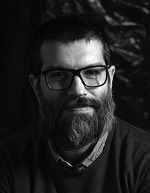ESTRO 2023 Biology Track Report
Chair: Nicolas Foray, France
Co-chair: Laura El Nachef, France
Speakers:
Michel Bourguignon, France
Sarah Baatout, Belgium
Navita Somaiah, UK
The effects of radiotherapy for tumour control must be carefully balanced with potential consequences for healthy tissues. In particular, due to inter-individual and site-dependent heterogeneity in radiation response, this issue should be pondered from a radiobiological point of view in order to identify strategies for harm reduction.
Radiosensitivity represents an abnormal tissue response to high doses of radiation. It translates to severe clinical toxicity across different treatment sites in a relevant proportion (20%) of patients (Bourguignon). Predictive functional assays can be used to reflect dose dependence of clinical manifestations, establish a relationship between cellular and clinical radiosensitivity, and identify patients with moderate or severe radiosensitivity. Classical assays that are used to quantify individual radiosensitivity, such as the surviving fraction at 2Gy (SF2), are difficult to implement in the clinical setting. Other tools such as apoptosis and DNA damage detection or genomic approaches such as single nucleotide polymorphisms have failed to demonstrate a relevant and robust correlation with clinical effects. Conversely, genomic-wide association studies have proved useful to identify common genetic variants that are associated with toxicity but they are not appropriate for individual radiosensitivity assessment. Among novel assays, a correlation between ataxia-telangiectasia mutated (ATM) kinase activity (expressed as a maximum number of phosphorylated ATM foci per cell) and clinical toxicity across different tumour types has been reported.
Non-cancerous effects of radiation occur in different situations in terms of dose delivery, treatment site and target population (Baatout). Relevant differences in spatial and temporal radiation exposure may derive from different radiation modalities, for instance from conventional external beam irradiation as compared with targeted radionuclide. Radiation damage may result in different clinical translations according to the irradiated tissue. Radiation sensitivity of healthy tissues may also vary significantly according to the age of the patient: this consideration is extremely relevant in children, because they express a different profile of radiosensitivity as compared with the adult population, particularly with respect to lifetime cancer risk. Interestingly, clinical manifestations of radiation exposure and related morbidities vary greatly between male and female patients. This information stresses the need for future trials that should be oriented towards the study of specific patient subsets and damage sites.
Due to the number of cancer patients who receive radiation in the curative setting, and the corresponding proportion of long-term survivors at risk of durable sequelae, there is an urgent need for effective predictors of acute and chronic radiation toxicity (Somaiah). For instance, the INSIGHT study has demonstrated a correlation between late toxicity in breast cancer patients and the foci of residual double-strand breaks after 24 hours following 4Gy test irradiation in vivo (punch-skin biopsy samples) and in vitro (lymphocytes). However, the clinical applicability of radiosensitivity assays represents the major challenge in this area of research. Moreover, the multifactorial nature of toxicity beyond a mechanistic relation with dosimetry and the limited availability of information from current trials require the collection of combined data from large multidisciplinary and multimodal studies, possibly with the support of artificial intelligence protocols. If such efforts lead to the identification of reproducible, reliable biomarkers that may predict accurately individual radiosensitivities, further research will be needed to personalise radiotherapy accordingly in terms of dose constraints, potential for dose escalation, use of altered fractionation regimens, pharmacological modulation and supportive care interventions

Mauro Loi
Radiation oncologist
Careggi Hospital
University of Florence
Florence, Italy